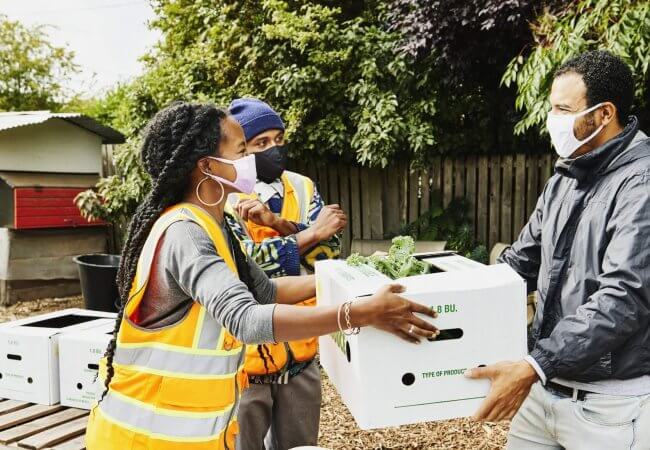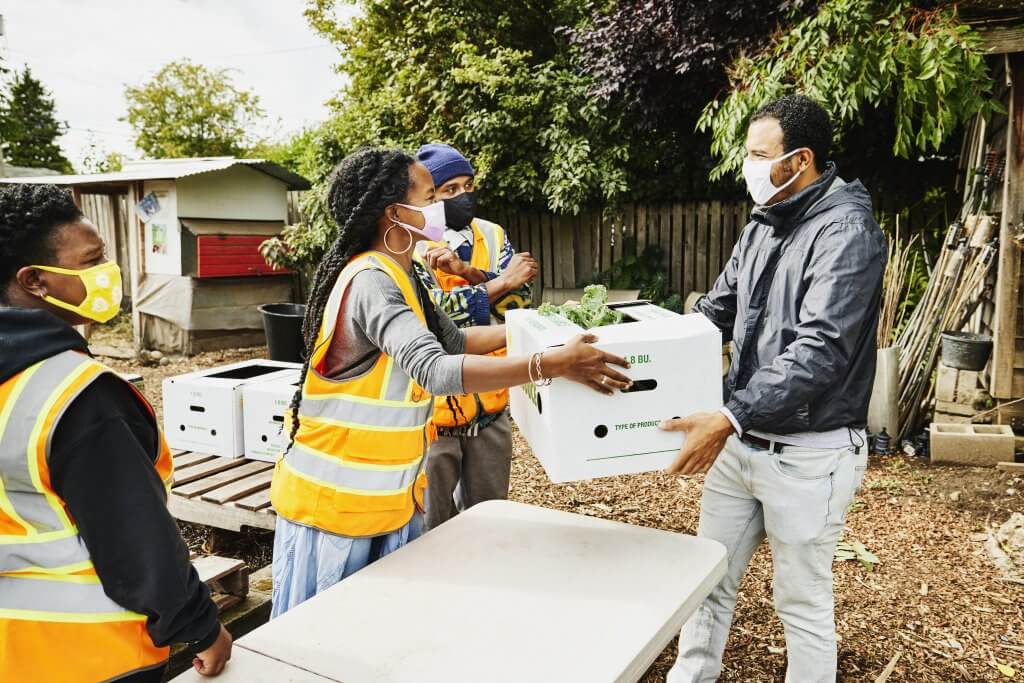
Nursing Innovations Funds Stimulate a Network of Partnerships for Health Equity

When nurses are empowered to create health equity in their communities, they bring together a network like nobody else can.
The Future of Nursing: Campaign for Action, an initiative of AARP Foundation, AARP and the Robert Wood Johnson Foundation, has demonstrated this principle through its Nursing Innovations Fund that supports the Campaign’s state-based Action Coalitions in creating replicable and promising solutions for improving health equity through nursing.
The Nursing Innovations Fund was also designed to spark collaboration with partners outside of nursing. One condition of the award is that applicants must seek matching funds from other organizations. In combination with other tools to engage local stakeholders, the awards have led to an impressive array of new multi-sector relationships, helping nurses discover new allies for creating better access to care and services.
Launched in 2018, the Nursing Innovations Fund has led to new projects in 23 states. The Campaign has awarded more than $850,000 to a wide variety of initiatives, with every dollar being matched by other funders. This blog highlights the collaborations and projects from the 2019 and 2020 cohorts representing 17 states, whom created over a dozen publicly accessible tools to be used for building health equity. All of the resources are available on the Campaign website.
State coalitions secured investment from multiple organizations that understand why it is so important to invest in better access to care and services. They include organizations one might expect, such as hospitals, nursing schools, and regional philanthropies. Action Coalitions also secured funding from unexpected sources:
- In Georgia, funding from the Clayton County Fire and Emergency Services helped create more effective paths for Black men to enter nursing.
- In Kentucky, the Kentucky Beef Council supported an initiative to prevent suicide in the farming community, and
- In Nebraska, Scoular, an agriculture supply chain company, contributed matching funds to a project aimed at improving health equity.
In addition to funders, Action Coalitions garnered critical support from community partners representing dozens of different organizations. Here are a few of their stories:
- In Pennsylvania, a podcast highlighting nurses in health equity roles featured many local partners, including Sanctuary Farm, a program that converts abandoned areas in Philadelphia to farm plots.
- In Washington, a program to bring culturally appropriate food and essentials to older Filipino community members worked with local and national groups such as the National Alliance for Filipino Concerns.
- In Indiana, nurses from the Indiana Center for Nursing collaborated with the AARP state office to enable nursing schools across the state to implement holistic admissions programs
Crucial to the impact of these projects is the idea that all of them can provide insights that help many other organizations disrupt disparities and improve access to care and services.
Actions Coalitions drew on well-established tools to address health disparities, including the Campaign’s Heath Equity Toolkit and the Centers for Disease Control and Prevention’s (CDC) Healthy People 2030. In turn, many of them developed new resources to help others:
- In Wisconsin, the Action Coalition developed a curriculum to improve nurses’ disaster response capabilities, and it is being shared throughout the state.
- In Massachusetts, nurses developed an anti-vaping resource kit for use in public schools.
- The Pennsylvania initiative centers on a podcast that helps nurses envision new careers in health equity.
Together, these partnerships, resources, and insights add up to a powerful network working to achieve health equity in the U.S. built on strengthened nursing capacity and expertise, as the National Academy of Medicine’s Future of Nursing 2020—2030 report has envisioned.
In the coming weeks, this Campaign blog will feature more detailed explorations of how this work brought together local and state coalitions to address health equity. Projects to be featured include:
- Indiana – This project brought together partners including AARP Indiana State office and Orbis Education to help nursing programs implement holistic admissions and peer-to-peer mentoring for the Nursing Education, Engagement, and Diversity Statewide Initiative, or NEEDS.
- Kentucky – The Kentucky Nurses Action Coalition enlisted school nurses to address the state’s disproportionate suicide rate, culminating in a dramatic presentation designed with the Actors Theater of Louisville. Title: School Nurses to BARN Camp for the Mental Health and Wellness of Kentucky Youth.
- Massachusetts – This project addressed vaping in youth in partnership with education and law enforcement groups from across the state, yielding new curricula to aid teachers in elementary and secondary schools. Title: Promoting Health Literacy to Influence Health and Wellness of Students in the Community: Widening the Connections.
- North Carolina – Working with the North Carolina Action Coalition, the North Carolina Agricultural and Technical University developed a new model of coalition-building to help African American and rural communities. Title: Project RARE (Reciprocal, Authentic, Relationships for Equity).
- Wisconsin. The Wisconsin Nurses Center explored gaps in the state’s emergency preparedness plans, then developed a training to help nurses address the problems. Partners included nursing schools as well as the Rural Wisconsin Health Cooperative and the Wisconsin Primary Health Care Association. Title: Preparing Wisconsin Nurses to Address the Needs of Vulnerable Populations in a Public Health Emergency.
Previous blog entries have also explored Nursing Innovations Fund programs in Pennsylvania, West Virginia, and Wyoming.
Are you interested in addressing health equity in ways like the Campaign’s Action Coalitions? Visit the Nursing Innovations Fund page for a complete list of programs as well as the Campaign resources nurses used to create them.
